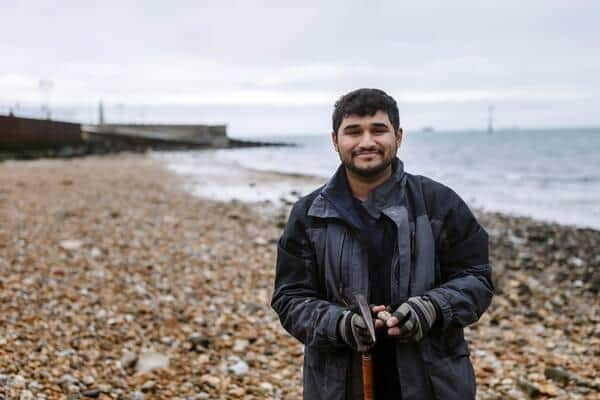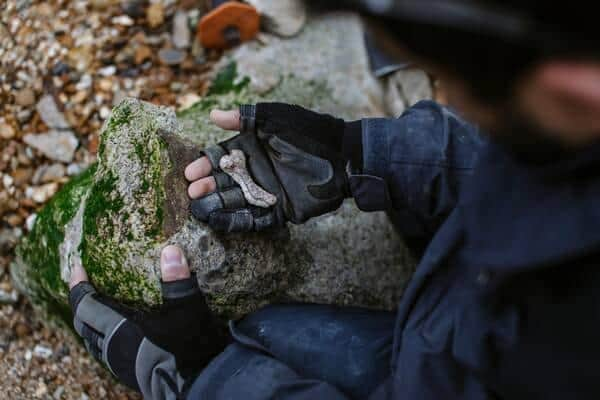Crocodile and turtle fossils found in Southsea seawalls by University of Portsmouth palaeontology students
and live on Freeview channel 276
After their first discovery last year, the University of Portsmouth students have since discovered five turtle bones, six crocodile teeth and some other unidentifiable bones.
Hamzah Imran, a second year palaeontology student, said: ‘My friends and I were at the beach when I noticed a rock with a thick black line. I’ve spent years fossil hunting and thought it must be a bone of some sort.


Advertisement
Hide AdAdvertisement
Hide Ad‘We started hitting it with rocks at first – a rather Neanderthal attempt to free it, but then decided to return later that day with chisels and hammers.
‘After four hours, we managed to break out the bone, but it was actually the rest of the rock that made us scream with excitement – there was a crocodile leg bone at the other end.’
The students’ finds almost certainly came from Dorset, but crocodiles likely lived along the entire southern coast of Britain 140 million years ago in swamps and lagoons.
The group of friends sought permission from the council to break out other fossils and have since found numerous other specimens.


Advertisement
Hide AdAdvertisement
Hide AdHamzah said: ‘We’ve visited the same part of the beach again and again, and have found turtle shells, crocodile teeth, crocodile bones, fish bones, fish teeth and bits of random isolated bones I’ve never seen before.
‘One of our best finds was the shoulder blade and shell of a turtle as well as other turtle limbs.’
The fossils were found on Southsea beach opposite the Portsmouth Naval Memorial between Clarence Pier and Southsea Castle, where new sea defences are being installed.
Hamzah approached his professor, David Martill, from the School of the Environment, Geography and Geosciences, to help verify some of the finds.
Advertisement
Hide AdAdvertisement
Hide AdProfessor Martill said: ‘I think the old seawall building blocks that are being uprooted have come from the Isle of Purbeck, Dorset, which means the fossils would be from around 145 million years ago.
‘These limestone rocks were probably exposed in Durlston Bay, a fossil-rich bay on the Isle of Purbeck Dorset, and then used for the original seawall.
‘These rocks make excellent walling and kern stones and were used widely for our streets and sea defences. That is how these crocodiles came to be in Portsmouth.
‘The crocodiles back then will have been more dominant on land than in the ocean, so they would have been roaming around with dinosaurs, turtles and pterosaurs in an ecosystem sprawling with swamps and lagoons.’

